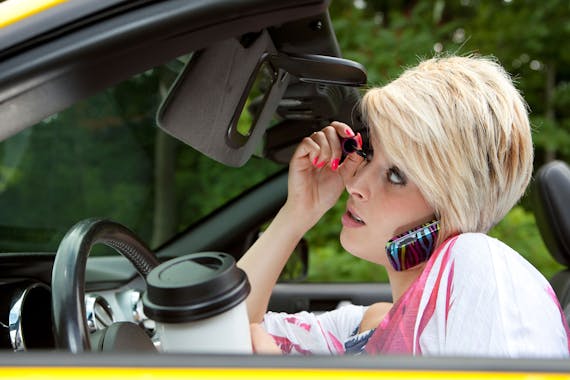What are Britain’s worst driving habits?

Bad driving habits lead to frustration, congestion and even crashes. Here, we take a look at some of the worst, albeit ones that you will see on most British roads, most days.
Space invaders
You’re driving along a motorway or dual carriageway, keeping a safe distance from the car ahead, when someone pulls over in front of you.
Inserting a car into what was previously enough space between two cars travelling at speed is highly dangerous. That driver doesn’t have enough space in front of them to react and brake if the car in front suddenly stops. This is how motorway pile-ups happen.
The ‘space invaders’ sometimes change lanes even when there’s not enough room between two cars. You can often spot them before they make their dangerous manoeuvre: they’ll speed past inside you, then, when their progress is blocked by a car, they’ll suddenly pull out into a space barely big enough to fit into. As As with all driving situations, the best thing is to anticipate that they’re going to do this – overtaking you on the inside when the speed of traffic in the lane is slower than the one you’re in – and prepare to brake.
Middle-lane hogging
This is one of the most common complaints among motorway drivers: other drivers who are just stuck in the middle lane, when they could easily be in the left-hand lane. There are many reasons why, but research shows that we lose a third of our road capacity because of it – which leads to greater congestion.
Rule 264 of the Highway Code says: “You should always drive in the left-hand lane when the road ahead is clear. If you are overtaking a number of slower-moving vehicles, you should return to the left-hand lane as soon as you are safely past.” Many drivers seem unaware of this rule – which perhaps isn’t surprising as, until very recently, learner drivers had no lessons in motorway driving, so most drivers don’t know how to do it.
But the Highway Code is clear. Stay in the left-hand lane until you need to overtake. If you also need to overtake something in the middle lane, pull (safely) into the outside lane. Then move back to the middle lane, then the inside lane.
If we all use better lane management, motorway traffic will be safer and flow better.
Changing lanes before a junction
You know how sometimes a motorway comes to a complete stop for no reason? Or the outside lane is at a complete standstill while the other two lanes are moving slowly? This is called ‘phantom traffic jam’ and is caused by drivers not filtering in turn at junctions.
As cars enter the motorway from a slip road, drivers in the inside lane move to the middle lane to let them in. Drivers in the middle lane see this and pull into the outside lane to avoid the cars that had been on the inside lane. Drivers in the outside lane have to brake to allow the middle-lane drivers in. Drivers behind see the brake lights and they also brake, creating a cascade effect along the lane, bringing the cars to a complete stop.
The solution is simple. If you’re driving in the left-hand lane, just slow down, stay in the same lane and let cars join the motorway. You might have to slow down for a minute or so, but you’ll soon be back up to speed. Leaving plenty of space between you and the car in front also helps, as you won’t need to brake if a car pulls in front of you.
Tailgating
Driving just a few feet behind the car in front – known as tailgating – means that you don’t have enough space and time to react and stop, so if the car in front brakes suddenly, you're going to crash into them.
And as rear-ending the car in front is always the fault of the driver of that following car, it will be their insurance company that pays for any damage, leading to a loss of any no-claims bonus.
More seriously, drivers caught tailgating can also find themselves facing a £100 fine and three penalty points. They could also be prosecuted for careless driving, which could lead to a £5,000 fine, driving ban or even prison. In short, don’t do it.
Using a mobile phone
Driving while distracted is a recipe for disaster – and there’s nothing more distracting than a mobile phone.
The most recent figures from the Department for Transport show that mobile phone use was the responsible for 33 deaths on Britain’s roads in 2017. Drivers who use a mobile phone while driving are four times more likely to crash, injuring or killing themselves and other people.
The best advice is not to use a mobile phone while driving as it’s illegal and very distracting. Using a hands free phone is just as distracting despite being legal so put your safety first.
Make searching and staying updated even easier.